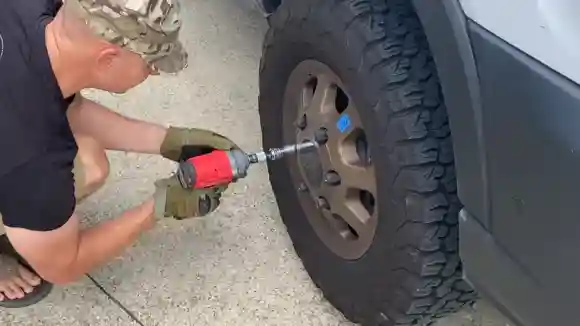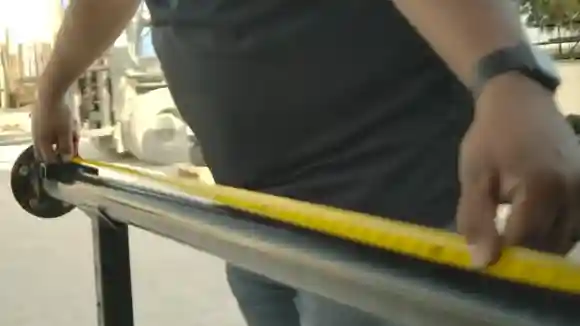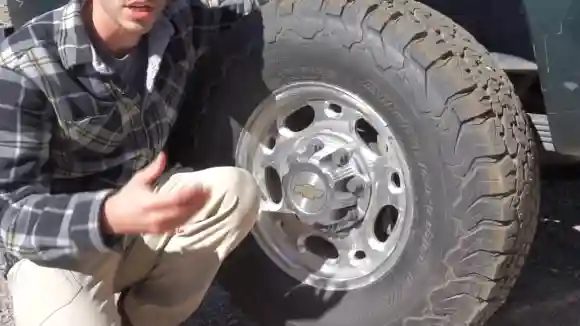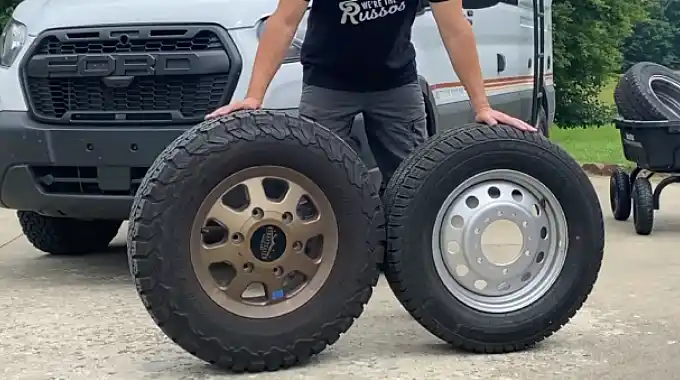As a trailer owner, you may have considered upgrading your tires to improve stability, traction, and ground clearance. While it is possible to install bigger tires on your trailer, it’s essential to consider certain factors before making any changes.
Firstly, you must ensure that your trailer can handle larger tires. Additionally, it’s crucial to select the appropriate tire size and type that fits your towing needs and the intended use of your trailer. Moreover, bigger tires might impact your trailer’s suspension, braking system, and weight capacity, so adequate research is essential to avoid any issues.
This article discusses how to install bigger tires on your trailer, including what size and type of tires to choose. Read on to learn more about installing bigger tires on your trailer.
Step on How Can You Put Bigger Tires on Your Trailer

If you want to put bigger tires on your trailer, here are seven steps you need to follow.
- Step 01: Determine the Appropriate Tire Size
- Step 02: Consider Rim Compatibility
- Step 03: Calculate the Necessary Clearance
- Step 04: Check Axle Capacity
- Step 05: Purchase the Right Tires
- Step 06: Installation
- Step 07: Test and Adjust
Step 01: Determine the Appropriate Tire Size
To figure out the right tire size for your trailer upgrade, consult the manufacturer specifications or the owner’s manual, but have you considered the potential benefits of bigger tires?
While it may seem counterintuitive to replace your trailer’s standard tires with bigger ones, doing so can actually improve overall performance and safety.
Step 02: Consider Rim Compatibility
You’ll want to ensure that your rims can handle the increased size and weight of the tires to ensure a safe and smooth ride. It’s important to note that not all rims are designed to accommodate larger tires. If your current rims are not compatible, then you will need to purchase new rims that are designed to fit the larger tires.
To determine if your current rims are compatible, you will need to refer to the manufacturer’s specifications or consult with a professional. One important factor to consider is the rim diameter. This must match the diameter of the tire to ensure proper fit and function.
| Rim Diameter (inches) | Compatible Tire Sizes |
| 13 | 155/80R13, 165/80R13, 175/70R13, 185/70R13 |
| 15 | 185/65R15, 195/65R15, 205/65R15, 215/65R15 |
Step 03: Calculate the Necessary Clearance
Larger tires will take up more space and you need to ensure that there is enough clearance within the trailer’s wheel well.
To calculate the necessary clearance, you must first measure the available space and compare it to the dimensions of the bigger tires you intend to install. It’s important to note that the clearance should not only be sufficient for the tires to fit, but also for them to rotate freely without rubbing against any components.
This includes the wheel well itself, as well as any suspension components or brake lines that may be in close proximity to the tire. If the clearance is not enough, you may need to adjust the suspension or install wheel spacers to create enough space for the larger tires.
Step 04: Check Axle Capacity

Verifying your trailer axle’s capacity to handle the additional load imposed by larger tires is crucial for ensuring safe and successful installation. The axle carries the weight of the trailer and its cargo, and it’s essential to ensure that the axle rating specified by the manufacturer is not exceeded.
Putting bigger tires on your trailer will increase the weight and size of the wheels, which will impact the trailer’s handling and stability. The axle rating determines the maximum weight the axle can support, and it’s important to ensure that the increased weight of the larger tires remains within the limits of the axle rating.
Exceeding the axle capacity can result in a trailer that’s unstable, difficult to control, and dangerous to tow. Therefore, before installing bigger tires, checking your trailer’s axle capacity is vital and ensuring it can handle the additional load.
Step 05: Purchase the Right Tires
After determining the appropriate size, load, and speed ratings for your trailer, be sure to purchase the right tires from a reputable dealer, considering factors such as tread pattern, quality, and any additional features. Here are some tips to help you choose the right tires for your trailer:
- Consider the type of terrain you’ll be towing on. Different tire tread patterns are designed for different types of terrain. For example, if you are towing on rough terrain or gravel roads, consider tires with a more aggressive tread pattern.
- Look for tires with a high load rating. The load rating refers to the maximum weight that the tire can carry at a given pressure. Ensure the tire’s load rating is sufficient for your trailer’s weight.
- Check for any additional features that may be important for your specific towing needs. For example, some tires may be designed for better fuel efficiency, while others may be better suited for wet conditions.
Step 06: Installation
During installation, the old tires will be safely removed and replaced with the new, larger tires. It’s important to ensure that the tires are properly balanced and inflated to the recommended pressure. Improper installation could cause damage to your trailer and create a safety hazard on the road.
Therefore, it’s highly recommended to seek the assistance of a professional who can guarantee a successful installation.
Step 07: Test and Adjust
Once the new tires are installed, take your trailer for a test drive to gauge their performance and handling.
Pay attention to any changes in towing characteristics or stability, and make necessary adjustments as required to optimize its performance on the road. This step is critical as it helps ensure safety and prevents any potential accidents.
Test the trailer under different driving conditions, such as on highways, rough terrains, and corners, to assess its overall performance.
During the test drive, pay attention to any unusual noises or vibrations, which could indicate a problem with the installation or the tires. If you notice any issues, stop immediately and inspect the tires and wheels for any damage.
Adjust the tire pressure and suspension settings to get the best performance and handling. Remember, a well-tuned trailer ensures safety and reduces wear and tear on the tires.
Is it OK to use truck tires on a trailer?
Using truck tires on a trailer may cause unnecessary stress and wear on the tire, as it wasn’t designed for that type of weight and load. The construction of truck tires is different from that of trailer tires.
The tire’s actual weight capacity is different from the load rating shown because of the different frame designs. This means using truck tires on a trailer could result in tire failure, which could be dangerous, especially when hauling heavy loads.
Moreover, truck tires have a different tread design compared to that of trailer tires. The tread of the tire begins wearing differently than it was designed, leading to uneven wear and tear. This can reduce the tire’s lifespan and increase the chances of a blowout.
Do bigger tires help with towing?
Larger tires can enhance your truck’s towing performance, but only up to a certain point. When you increase the size of your tires, you also increase the load-carrying capacity of your truck. This means that your vehicle can handle more weight with bigger tires, which can help with towing.
However, there is a limit to how big you can go before you start to experience negative effects on your towing ability. If you put tires on that are too big, you risk overloading your truck that leads to bad consequences.
This can cause your vehicle to struggle when towing, leading to decreased performance and potentially dangerous driving conditions. Therefore, choosing a tire size that matches your vehicle’s towing capacity and weight limit is essential.
Can you pull a trailer with different size tires?

You can’t pull a trailer with different size tires because the smaller tire may not be able to handle the weight, causing potential safety hazards. It’s important to ensure that both tires have the same load-carrying capacity and inflation levels. Here are three reasons why:
Uneven wear and tear: When you have two different size tires, they’ll wear out at different rates. This can cause uneven tire wear and tear, leading to premature failure and potential safety hazards.
Reduced handling and stability: Different-sized tires have different rolling diameters, which can affect the handling and stability of the trailer. This can cause swaying and instability when towing, making it difficult to control the trailer.
Overloading: When using two different size tires, the load has to be at most the capacity of the lowest-rated tire. With this substantial difference in weight capacities, the chances of inadvertently overloading on the smaller side tire are quite possible.
This can cause the tire to blow out or fail, leading to potential accidents and safety hazards.
Upgrade Your Trailer Tires for Optimal Performance and Safety on the Road
You now know how to put bigger tires on your trailer. It’s important to remember that using larger tires can affect the performance of your trailer, so be sure to consider the weight of your load and the capacity of your trailer before making any changes.
Think of your trailer as a ship sailing on the open sea. Just like a ship needs sturdy and reliable equipment to navigate through rough waters, your trailer needs the right tires to handle heavy loads and long trips.
By upgrading your tires, you’re giving your trailer the power it needs to withstand any challenge that comes its way. So, go ahead and put those bigger tires on your trailer.
With the knowledge you’ve gained, you can confidently hit the road, knowing that you’ve made the right choice for your trailer’s performance and safety.
Happy travels!



